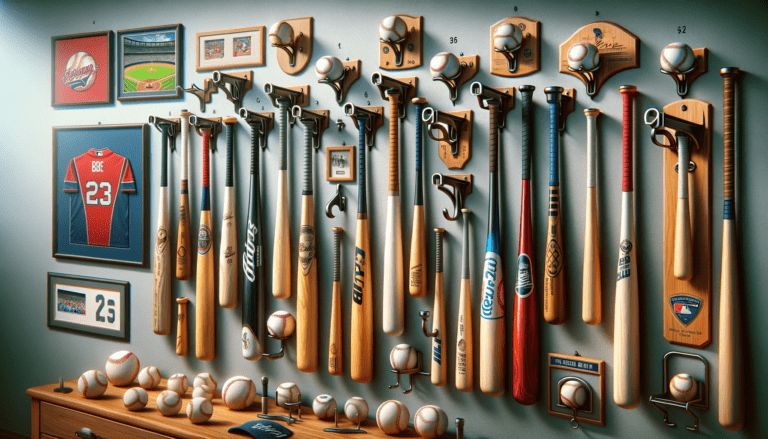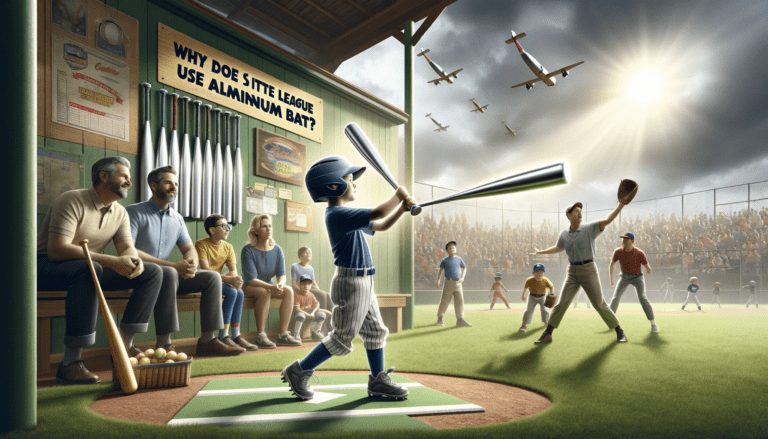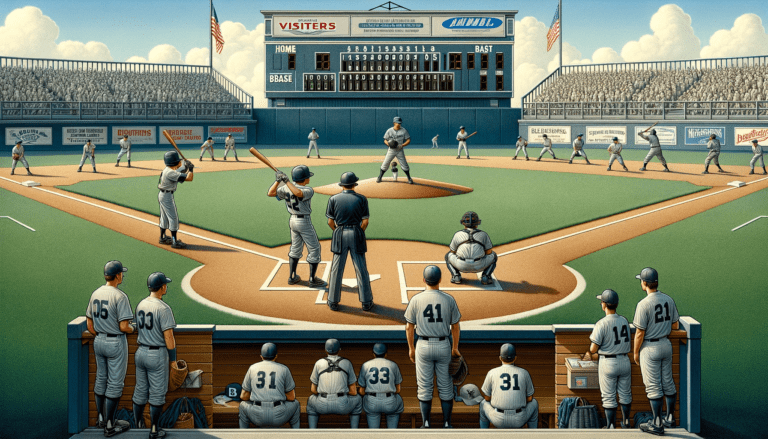What Does Bpf Mean on a Baseball Bat?
BPF stands for Bat Performance Factor, a crucial measure of a bat’s trampoline effect. In simpler terms, it gauges how much energy the bat transfers to the ball upon impact.
Understanding BPF helps players select the right bat for their hitting style and league regulations.
So, whether you’re a seasoned slugger or just starting out, grasping the significance of BPF can enhance your game.
Let’s explore this essential aspect of baseball equipment to elevate your performance on the diamond. You may read the guide on What Does Drop 8 Mean in Baseball Bats
Key Takeaways
- BPF, or Bat Performance Factor, is a standardized measure of a baseball bat’s ability to transfer energy to the ball upon impact.
- The standard BPF for youth baseball bats is typically 1.15, while adult baseball bats adhere to different standards, like BBCOR.
- Choosing the right bat involves understanding BPF values, as they can significantly affect a player’s performance and are regulated in league play.
- Technological advancements in materials and design have led to changes in BPF standards, reflecting the dynamic nature of bat manufacturing.
- Ongoing discussions about BPF focus on safety, competitive balance, and the need for regular testing to ensure compliance with evolving regulations.
The Basics of Bat Performance Factor
Defining BPF and Its Purpose in Baseball
Bat Performance Factor (BPF) is a critical metric in baseball that quantifies how a non-wood bat compares to a wood bat in terms of its trampoline effect.
The higher the BPF, the more the bat acts like a spring during contact with the ball, enhancing the ball’s exit velocity.
The purpose of BPF is twofold: to standardize bat performance across different materials and designs, and to ensure safety and fairness in the game.
BPF is particularly important in youth baseball and softball, where the strength and skill levels of players can vary widely.
Key points to understand about BPF include:
- It serves as a benchmark for comparing bat performance.
- It is used to certify bats for use in various leagues.
- It helps maintain a level playing field by limiting the ‘springiness’ of bats.
How BPF is Measured
Bat Performance Factor (BPF) is a numerical value that represents how much more effectively a bat can hit a baseball compared to a standard reference bat.
The measurement process involves a controlled test that compares the bat’s performance to that of a solid wood bat, which is considered the benchmark.
- The bat is placed on a testing apparatus where it strikes a baseball at a regulated speed.
- Sensors measure the speed of the ball before and after impact to determine the bat’s trampoline effect.
- The difference in speeds is used to calculate the BPF, with a higher number indicating a greater trampoline effect and, consequently, more potent hitting power.
This standardized testing ensures that all bats are evaluated under the same conditions, providing a fair comparison across different makes and models.
The BPF is crucial for league regulations, as it helps maintain a level playing field by ensuring that no bat provides an unfair advantage.
The Standard BPF for Youth and Adult Baseball Bats
In the realm of youth baseball, the standard Bat Performance Factor (BPF) is typically set at 1.15.
This figure represents the comparative performance of a non-wood bat compared to that of a wood bat, which is considered the benchmark.
The BPF standard ensures a level playing field by limiting the trampoline effect of the ball hitting the bat and thus the speed at which the ball can come off the bat.
For adult baseball, particularly in leagues that follow professional standards, the BPF is often aligned with wood bat performance, which means that non-wood bats must perform similarly to wood bats.
This is crucial for maintaining the integrity of the game and ensuring safety on the field.
The following points highlight the importance of adhering to BPF standards:
- Ensuring player safety by regulating the exit speed of the ball
- Maintaining competitive balance among players
- Complying with league regulations to avoid penalties or disqualification
Manufacturers like Easton are known for producing bats that comply with these standards.
For instance, the Easton ADV Hype is a popular choice among travel ball programs and is approved for play in leagues that follow the 1.15BPF standard.
Read Also: What Does a Bat Flip Mean in Baseball
The Impact of BPF on Bat Selection

Why BPF Matters When Choosing a Bat
When selecting a baseball bat, the Bat Performance Factor (BPF) is a crucial metric that players and coaches must consider.
BPF is an indicator of how a bat’s performance compares to that of a solid wood bat, which is the standard in professional baseball.
A higher BPF means the bat has a greater trampoline effect, potentially leading to more powerful hits.
Key factors to consider to BPF include:
- The league’s regulations on BPF, ensuring the bat is legal for play
- The player’s age and skill level, as different leagues have varying BPF standards
- The type of play, whether it’s casual or competitive, as this can influence the importance of BPF in bat selection
Understanding BPF is essential for making an informed decision that aligns with a player’s needs and league requirements.
It’s not just about the bat’s length, weight or aesthetics; it’s about how the bat’s performance can enhance or hinder a player’s game.
The importance of weight varies, but it should always be considered alongside BPF for a holistic view of a bat’s potential on the field. You may read also Why Do Baseball Players Use Wooden Bats
Comparing BPF Across Different Brands and Models
When selecting a baseball bat, comparing the Bat Performance Factor (BPF) across different brands and models is crucial for players at all levels.
BPF serves as a standardized measure to ensure that non-wood bats perform similarly to wood bats of comparable quality and class.
Here’s what to consider when comparing BPFs:
- Brand Reputation: Some brands are known for their advanced technology and higher BPF ratings.
- Model Specifications: Each model may have unique features that influence its BPF, such as the materials used or the bat’s weight distribution.
- League Standards: Bats must comply with the league’s BPF standards, which can vary from one organization to another.
Understanding the nuances between BBCOR, USSSA, and other certifications can help players make informed decisions.
For instance, a bat that meets the BBCOR standard might have a different performance profile than one meeting USSSA BPF 1.15 standards. It’s essential to align your choice with the league requirements and personal hitting style.
The Relationship Between BPF and Bat Restrictions in Leagues
The Bat Performance Factor (BPF) plays a pivotal role in the regulation of baseball bats across various leagues.
Leagues mandate specific BPF limits to ensure a level playing field and to address safety concerns.
For instance, the transition from the 1.15 BPF standard to the USABat standard illustrates how serious league baseball regulations evolve in response to advancements in bat technology.
- The USABat standard aims to create a more wood-like performance in youth bats.
- It also seeks to standardize the playing experience across different leagues.
These regulatory changes directly influence the types of bats that are permissible for use in league play.
Manufacturers must adapt their designs to meet these standards, which can lead to significant shifts in the market.
Players and coaches must stay informed about the current BPF regulations to ensure their equipment is compliant and to maintain competitive integrity.
Read Also: How to Tell If a Baseball Bat is Dead
Technological Advances in Bat Design
Materials and Construction Techniques Influencing BPF
The evolution of materials used in baseball bat construction has had a significant impact on Bat Performance Factor (BPF).
Composite materials, such as the EKO Composite used in the 2024 Louisville Slugger Meta LTD, have become increasingly popular due to their lightweight and durable properties.
These materials allow for larger barrel sizes without increasing the overall weight of the bat, which can enhance the BPF.
Several construction techniques also play a crucial role in influencing BPF:
- Three-piece construction is a method that separates the handle, barrel, and connector, allowing for independent movement and reduced vibration.
- The VCX2TM Connection System is an example of technology designed to control vibration, providing a more consistent and forgiving feel when hitting.
- The precise distribution of weight throughout the bat can significantly affect swing speed and control, further impacting BPF.
Manufacturers are continually experimenting with different combinations of materials and construction methods to optimize performance within the constraints of BPF regulations. You may read also How to Hold a Baseball Bat Right Handed
Innovations That Have Changed BPF Standards
The evolution of baseball bat technology has significantly altered the landscape of Bat Performance Factor (BPF) standards.
Materials such as composite fibers and advanced alloys have allowed for more precise weight distribution and enhanced trampoline effect, pushing the boundaries of what is possible in softball bat design.
Key innovations include:
- Introduction of composite materials that offer superior flexibility and durability.
- Development of variable-wall thickness technology to optimize performance.
- Implementation of advanced connection systems to reduce vibration and improve feel.
These advancements have not only improved player performance but also necessitated revisions in BPF standards to maintain a level playing field.
For instance, the Louisville Slugger Meta series has consistently set benchmarks for innovation, influencing BPF regulations with each release.
The 2024 Meta Limited Edition is a prime example, showcasing the latest in bat technology to meet the rigorous demands of competitive play.
Future Trends in Bat Technology and Potential BPF Implications
As bat technology continues to evolve, the Bat Performance Factor (BPF) is poised to undergo significant changes.
Advancements in materials science and engineering are expected to lead to the creation of bats with even greater performance capabilities.
These innovations may include the use of new alloys, composites, and even smart materials that can adapt to a player’s swing.
- The integration of biomolecules into bat construction could enhance durability and performance.
- Smart sensor technology might allow for real-time performance tracking and adjustments to BPF.
- Environmental considerations are likely to influence the production processes, leading to more sustainable bat options.
The implications of these advancements are far-reaching. They could redefine the standards for BPF, necessitating updates to regulations and testing protocols.
As the gap between amateur and professional equipment narrows, the discussion around fairness and accessibility in the sport will intensify.
Read Also: What Does Pine Tar Do in Baseball Bat
Conclusion
In summary, BPF, or Bat Performance Factor, is a crucial metric in the world of baseball that determines the liveliness of a bat in comparison to a solid wood bat.
Understanding BPF ratings is essential for players, coaches, and parents to ensure that the equipment used meets the required standards and enhances the player’s performance within the rules of the game.
As we’ve explored the diamond of BPF, it’s clear that this measure is not just about compliance, but also about safety and fairness in the sport.
Whether you’re selecting a bat for youth leagues or professional play, paying attention to the BPF can make a significant difference in the game’s integrity and the player’s success.
Frequently Asked Questions
What is Bat Performance Factor (BPF) and why is it important in baseball?
Bat Performance Factor (BPF) is a measure of how a non-wood bat performs in comparison to a standard wood bat. It’s important because it ensures a level playing field by limiting the performance of non-wood bats to closely resemble that of wood bats.
How is BPF measured?
BPF is measured by comparing the ball exit speed off a non-wood bat to the ball exit speed off a wood bat using the same pitching speed. A BPF of 1.15, for example, means the non-wood bat allows the ball to travel 15% faster than the wood bat with bpf of 1.20..
What is the standard BPF for youth and adult baseball bats?
The standard BPF for youth baseball bats is typically 1.15, while adult softball bats are regulated under different standards such as BBCOR, which has a BPF equivalent of approximately 0.50.
Why does BPF matter when choosing a baseball bat?
BPF matters because it affects the power and speed with which you can hit a ball. Choosing a bat with the appropriate BPF ensures that you are playing within the rules of your league and that you have a bat that performs well.
How do different brands and models affect BPF?
Different brands and models can have varying BPF ratings due to differences in materials and construction techniques. It’s important to compare these ratings to ensure you’re getting a bat that meets your league’s standards and suits your playing style.
What role do manufacturers play in BPF discussions?
Manufacturers are crucial in BPF discussions as they design and produce bats. They must balance performance with safety and regulations, and they often push for technological advances that can alter BPF standards.







